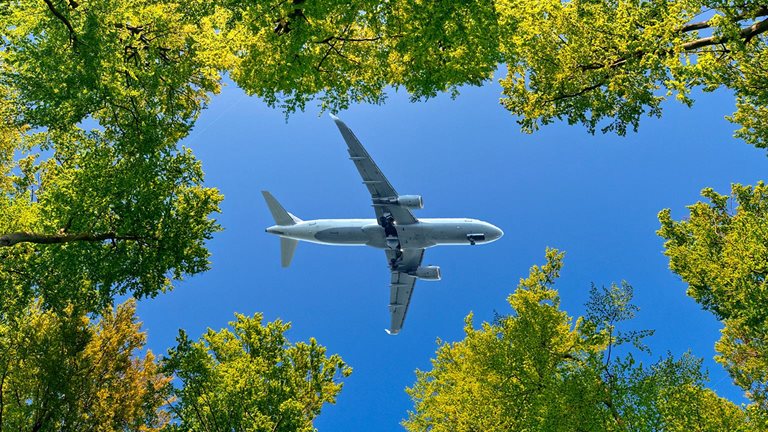 | |
| | |
ON DRONE DELIVERIES
Drone deliveries are developing, but challenges remain
| | | | | | | | | | | | You might be startled if you looked out your window and saw a drone hovering near your door, about to release a package onto your front steps. But such a sight could become more common as companies ramp up the use of drones in making deliveries. In 2021, there were close to half a million commercial-drone-delivery flights globally, and that number grew to about 875,000 in 2022 (an average of almost 2,400 drone deliveries per day). In 2023, we expect drone deliveries to exceed the one-million mark.
The benefits of such trips go beyond quickly providing a lunch order or birthday gift. Delivery drones fly at an average speed of 30 to 60 miles per hour, which allows them to rush critical supplies to people in disaster zones and remote, inaccessible areas. In crowded urban areas, deliveries via air routes could ease traffic congestion. The environmental advantages are also clear: delivering a one-pound burrito with a drone that usually weighs between five to 25 pounds generates far less emissions than using an average car, which weighs about 4,100 pounds.
If the scale-up continues, as we expect, there could be many winners. Some skeptics might question our current growth projections, however, since companies thus far have made limited progress on their long-standing plans to increase drone delivery flights. So what recent developments are encouraging more optimism? And what challenges remain?
First, the positives. Investor interest in drone delivery opportunities is at an all-time high: funding reached $101 million in 2022 but has hit $770 million in just the first half of 2023. The technology has also advanced considerably; for example, drones can now accurately navigate during subpar conditions, such as rainstorms.
In another major shift, the time-consuming process of defining regulations has recently borne fruit. As of March 2023, at least seven major regulatory bodies had issued rules about commercial-drone operations, focusing on aircraft certification, operator certification, airspace and operating rules, and infrastructure. (Aerial platform drones—those used for inspections or other types of observation—have lower certification requirements, so they are already in more widespread use.) In the United States, the Federal Aviation Administration’s Beyond Visual Line-of-Sight Aviation Rulemaking Committee released a report in March 2022 that included some recommendations, still under review, that could facilitate multiple aspects of delivery drone operations, including pilot certification and repair and maintenance.
| | | | | “In 2023, we expect drone deliveries to exceed the one-million mark.” | | | | | Public opinion of drone deliveries has also warmed. In a McKinsey survey of over 4,600 consumers, 56 percent of respondents said that they would opt for drone delivery if it was faster than the alternatives and did not cost more. Further, in a recent survey of drone industry executives, respondents reported that they expected 60 percent of their end customers to return after the first use of drone services.
Now let’s look at the challenges ahead. Despite the uptick in consumer acceptance, many people still worry that delivery drones may generate too much noise, invade privacy, or simply interfere with their enjoyment of a scenic sunset by crisscrossing the sky. Publicizing the benefits of delivery drones, such as lower emissions, may win over some new adherents. Consumers may also become more supportive if they see how longer-range drones can increase equity by improving people’s access to critical products and services. For example, there is a start-up that delivers vaccines and medicines to over 2,000 hospitals in Ghana, Rwanda, and the United States. Once consumers become more aware of such services, they may become more tolerant of a drone’s buzzing.
Beyond winning over consumers, the drone industry must address some remaining regulatory and technological barriers. Currently, many countries allow operators to control only a single drone, and some also require visual observers for some parts of the flight. The resulting high labor costs make it challenging to scale flights. On the technology side, the industry could benefit from further improvements in batteries—to support longer flights—and in the detect-and-avoid systems that help drones navigate crowded areas.
Of course, drones have uses that extend far beyond delivery, and these applications are also advancing, maybe even at a faster rate. Many companies, for example, including a large furniture retailer, use drones in warehouses to take photographs of inventory, which they then analyze using artificial intelligence. Others monitor remote assets using aerial surveillance drones that can check for damage, eliminating the need for costly on-site visits. Outside the corporate sphere, drones have been incorporated into aerial firefighting, agricultural seeding, and wildlife management. Eventually, passenger drones may play a big role in transportation. Even though it’s still early in the game, the possibilities are endless within this exciting sector.
| | |
| | | | | | | | Ellen Feehan on how older people view aging | | | A new survey reveals what older adults worldwide think matters most to their health. Their answers were surprisingly nonmedical in nature. Instead, they rated their health higher when they described having purpose, interaction, and participation in society.
| | |
| | | |
|
This email contains information about McKinsey’s research, insights, services, or events. By opening our emails or clicking on links, you agree to our use of cookies and web tracking technology. For more information on how we use and protect your information, please review our privacy policy. |
|
You received this email because you subscribed to our McKinsey Quarterly alert list. |
|
|
Copyright © 2023 | McKinsey & Company, 3 World Trade Center, 175 Greenwich Street, New York, NY 10007 |
|
|
|
|





